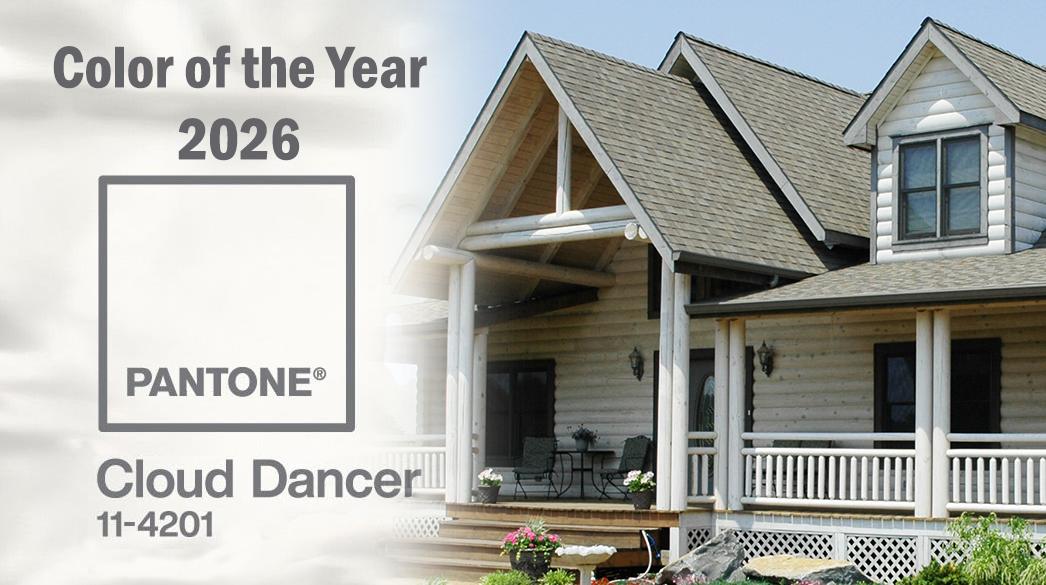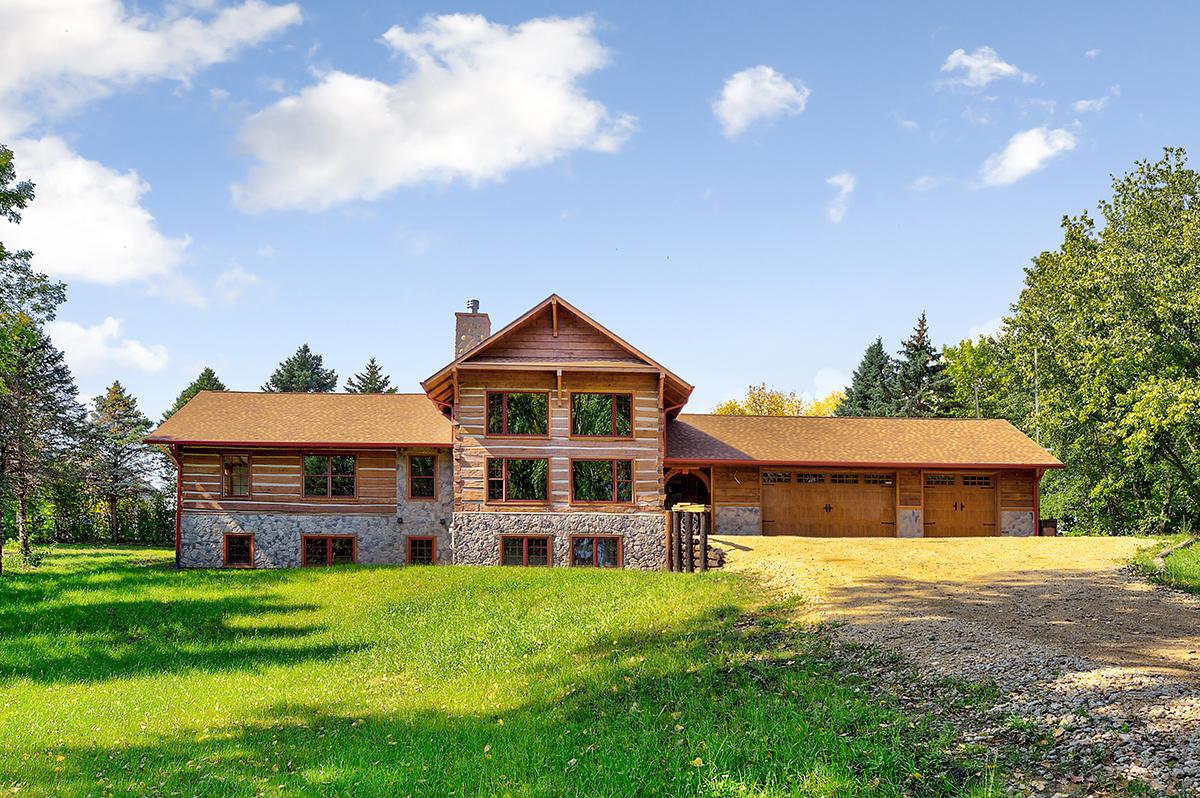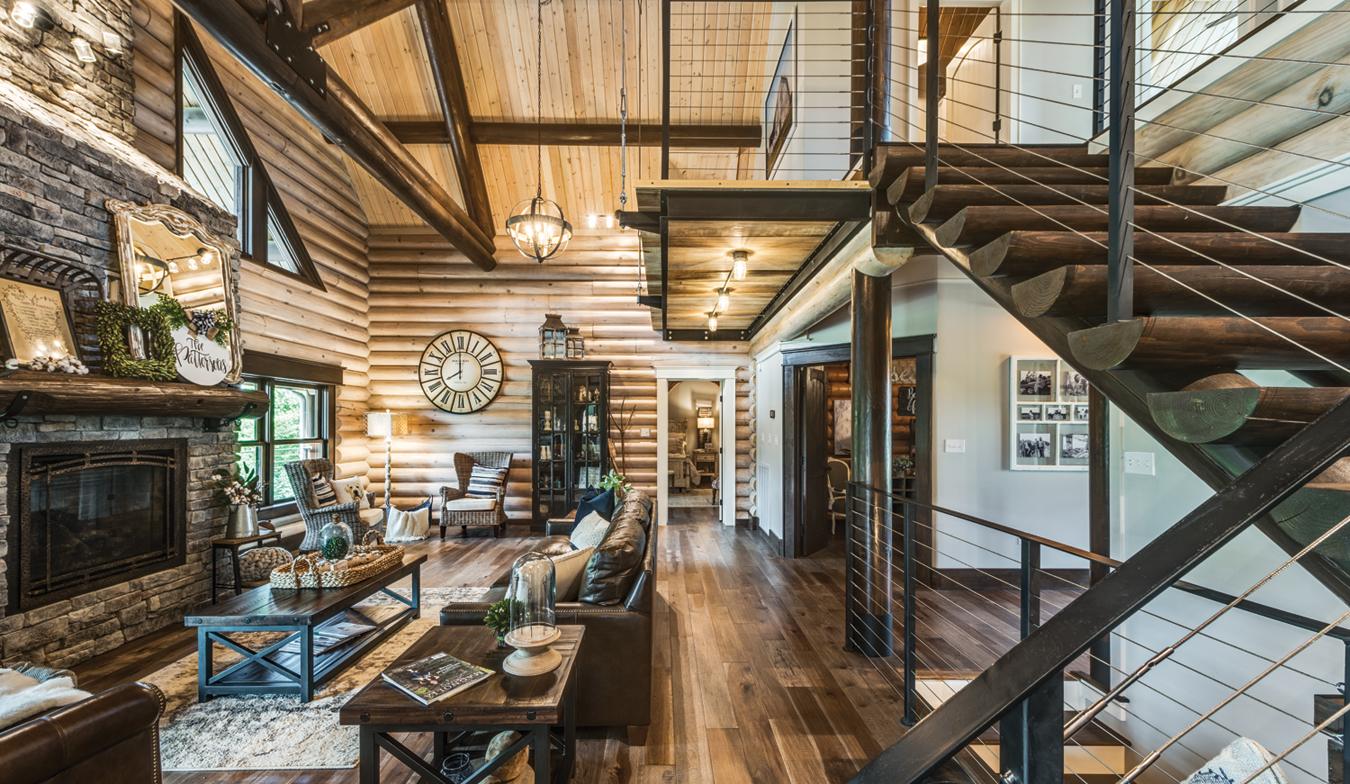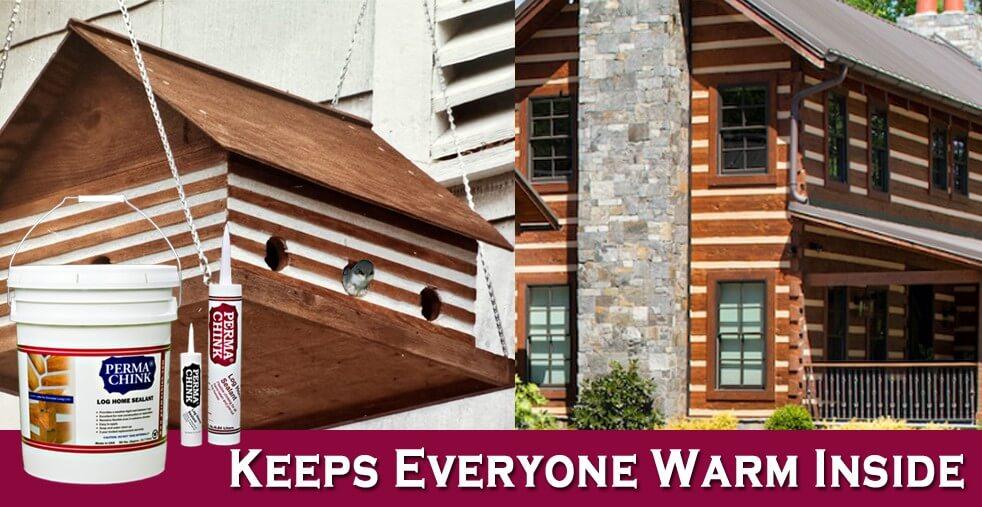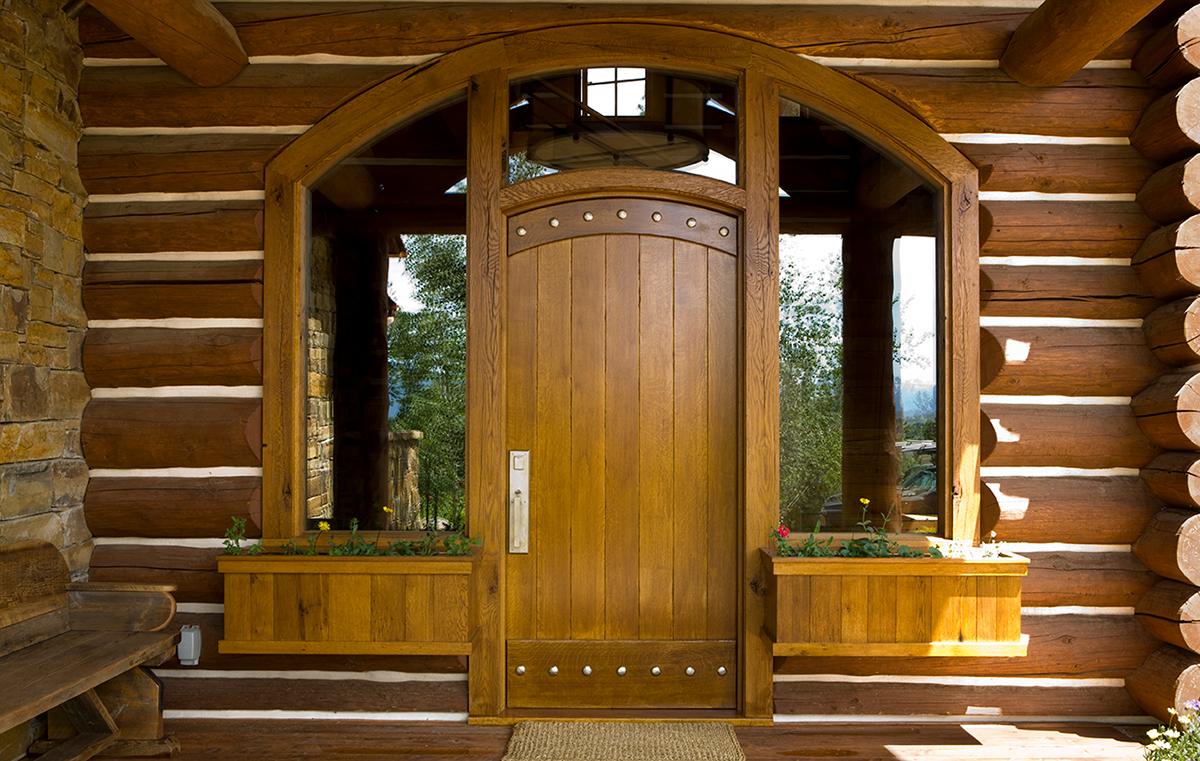Yes! Pantone has officially announced the Color of the Year for 2026, and it’s Cloud Dancer (PANTONE 11-4201) – a soft, balanced shade of white.
This marks a historic first: it’s the first time Pantone has chosen a white hue for its annual selection. The Pantone Color Institute describes Cloud Dancer as:
- Designed to evoke serenity and mindfulness in an era of digital overload
Pantone says the choice represents simplicity, clarity, and a fresh start, and it’s intended to serve as a “blank canvas” for creativity.
What does this trend mean for our customers?
Good news — you don’t need to rush to Home Depot for a can of white paint. Perma-Chink Systems has you covered.
We’ve developed stain colors specifically formulated for large logs and timbers — allowing the wood to breathe while the finish flexes and moves with it. And we have the perfect match for this emerging trend: Pickled White in our Lifeline brand. It’s available for both interior and exterior use, and several of our log and timber home manufacturers are already using it on their own homes — you could say they’re ahead of the trend!
Just look at Honest Abe Homes below, for example. Their stunning white-toned finishes show exactly how beautiful this shade can be. The name Cloud Dancer fits our Pickled White stain perfectly. Its semi-transparent finish allows the natural wood hues to shine through, adding depth, character, and a soft, modern elegance. It truly feels as if the color is dancing across the logs.
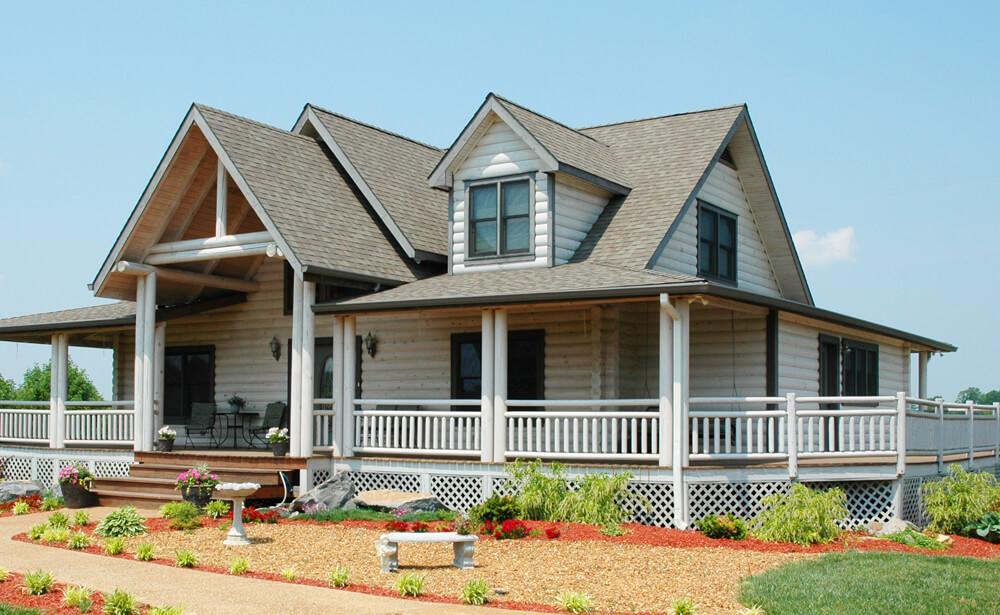
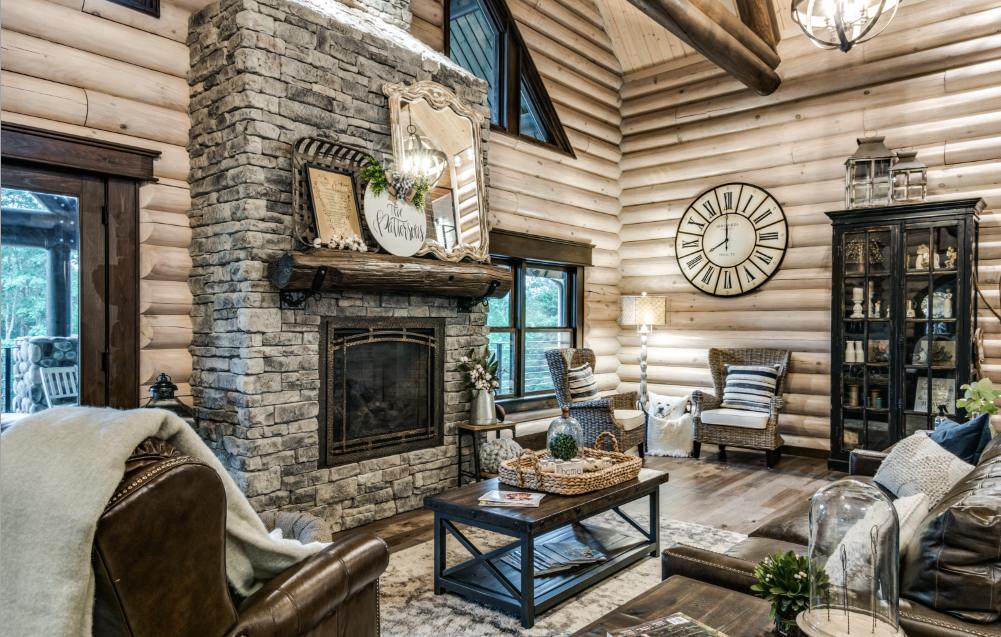

Pickled White also pairs beautifully with a wide range of colors — from Dark Walnut to Midnight to Barn Red — creating a versatile canvas of design possibilities.
Ready to explore the new trend?
Order your free samples here for your interior or exterior project.
A collection of beautifully decorated log and timber homes to inspire you this season. Enjoy – and may your holidays be warm, joyful, and full of light.
Beautiful decorations by Honest Abe Log Homes, Hearthstone Homes, Appalachian Log Homes, Satterwhite Log Homes, Beaver Mountain Custom Homes, Timberhaven Log and Timber Homes and StoneMill Log Homes.
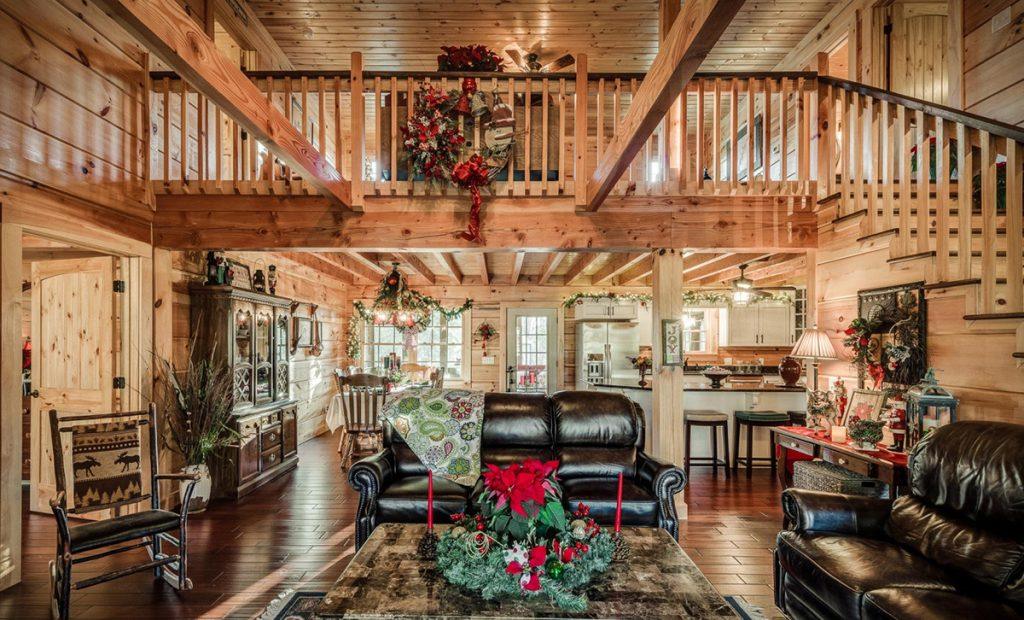
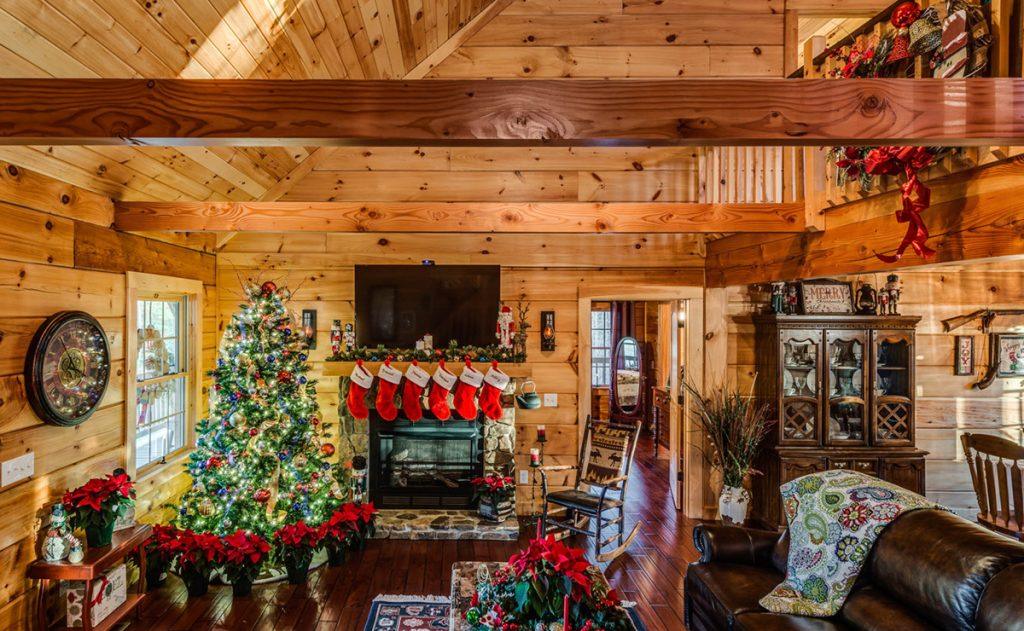
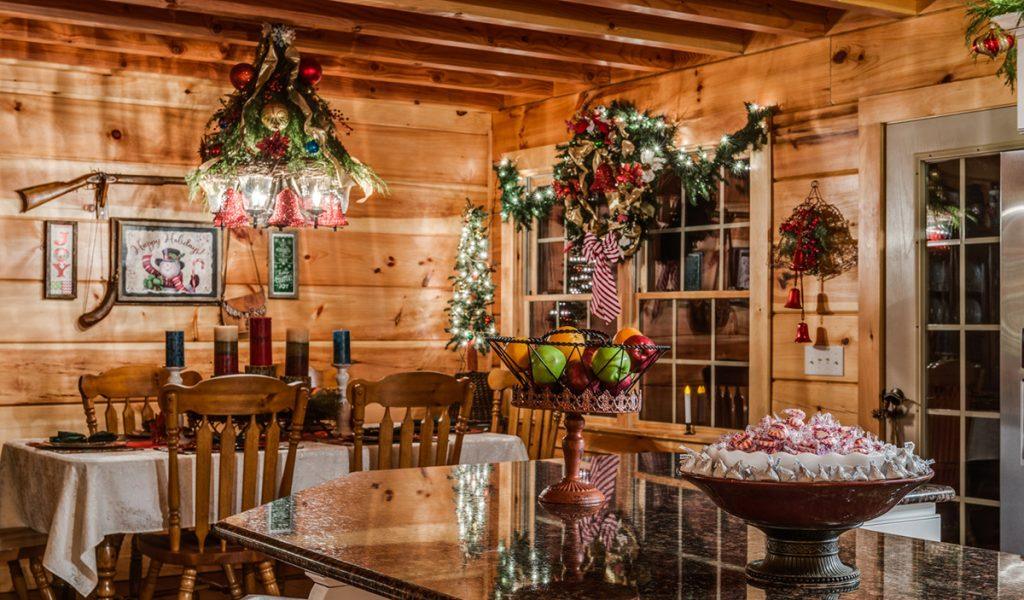
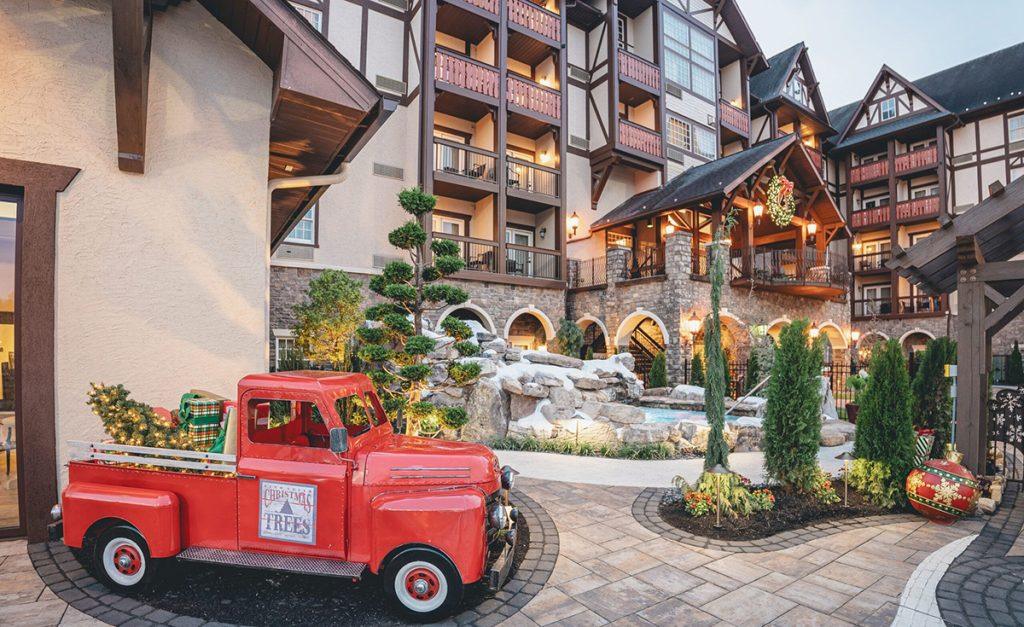
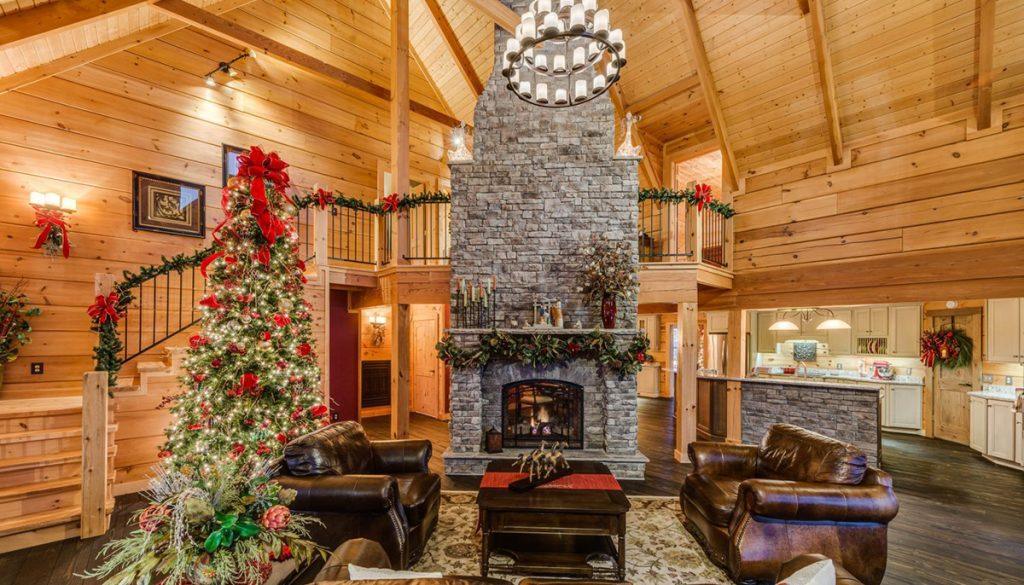
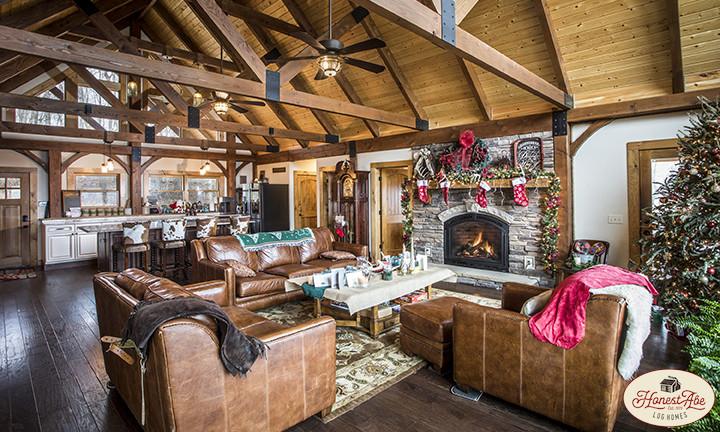
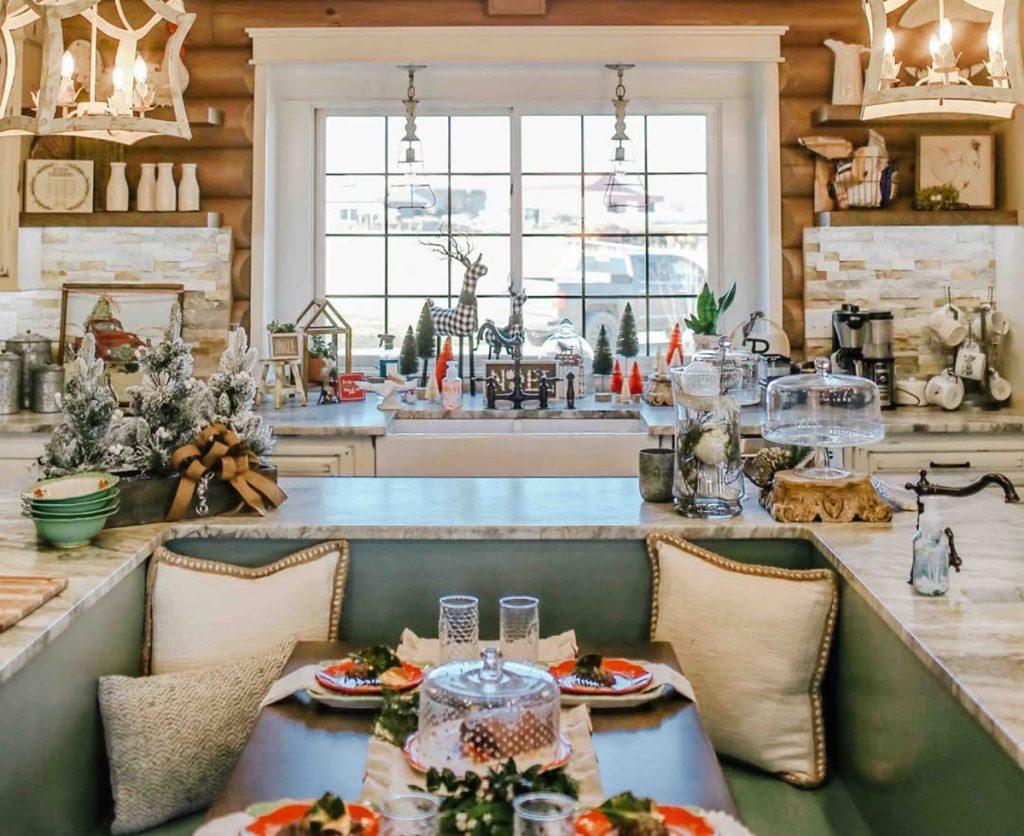

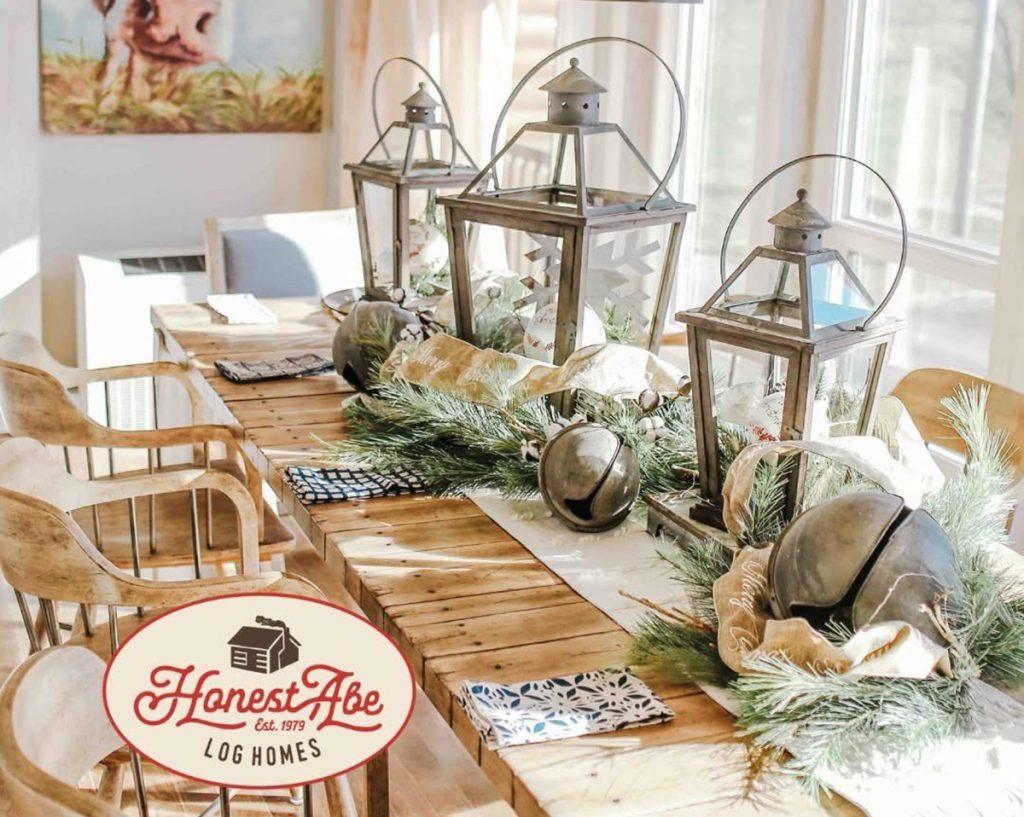
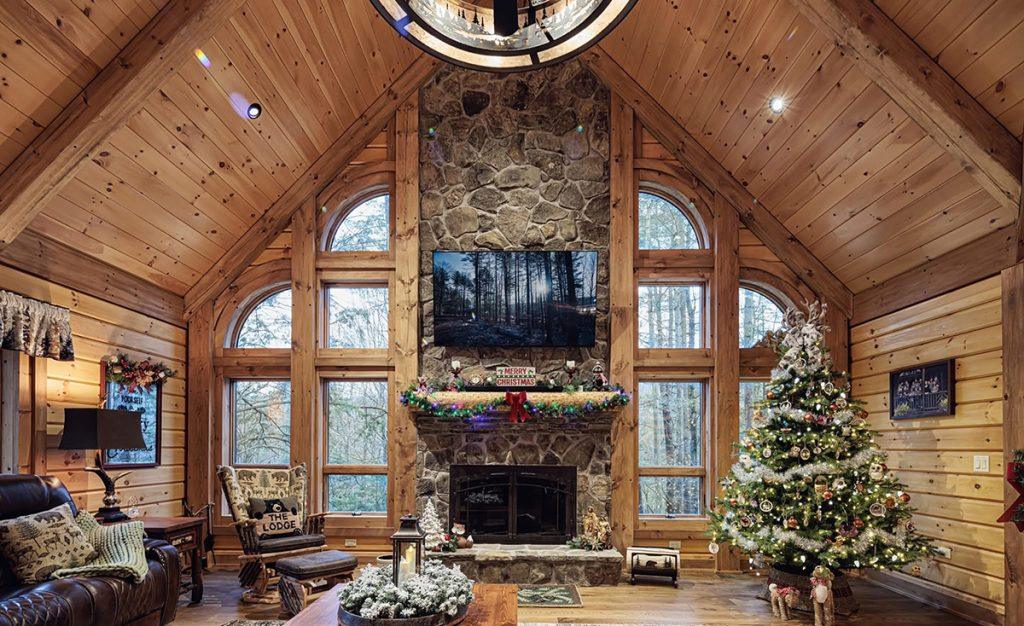
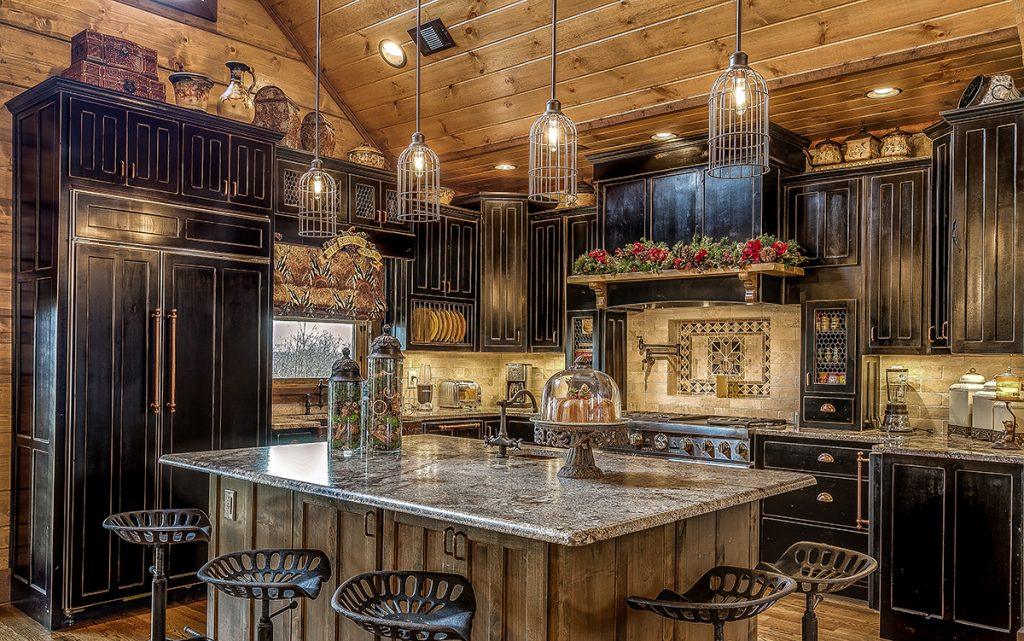
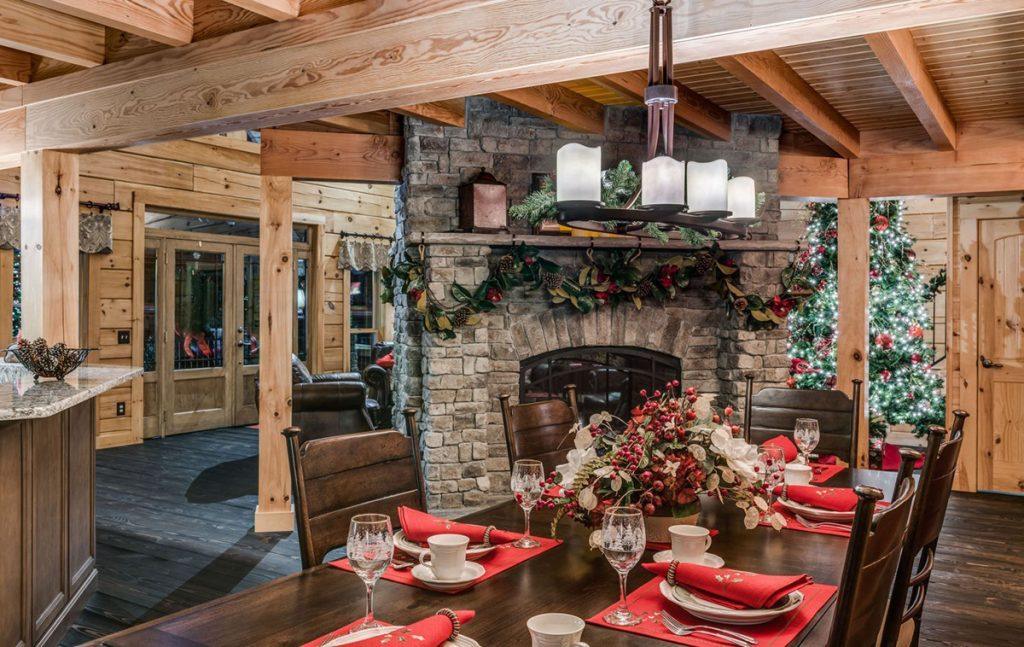
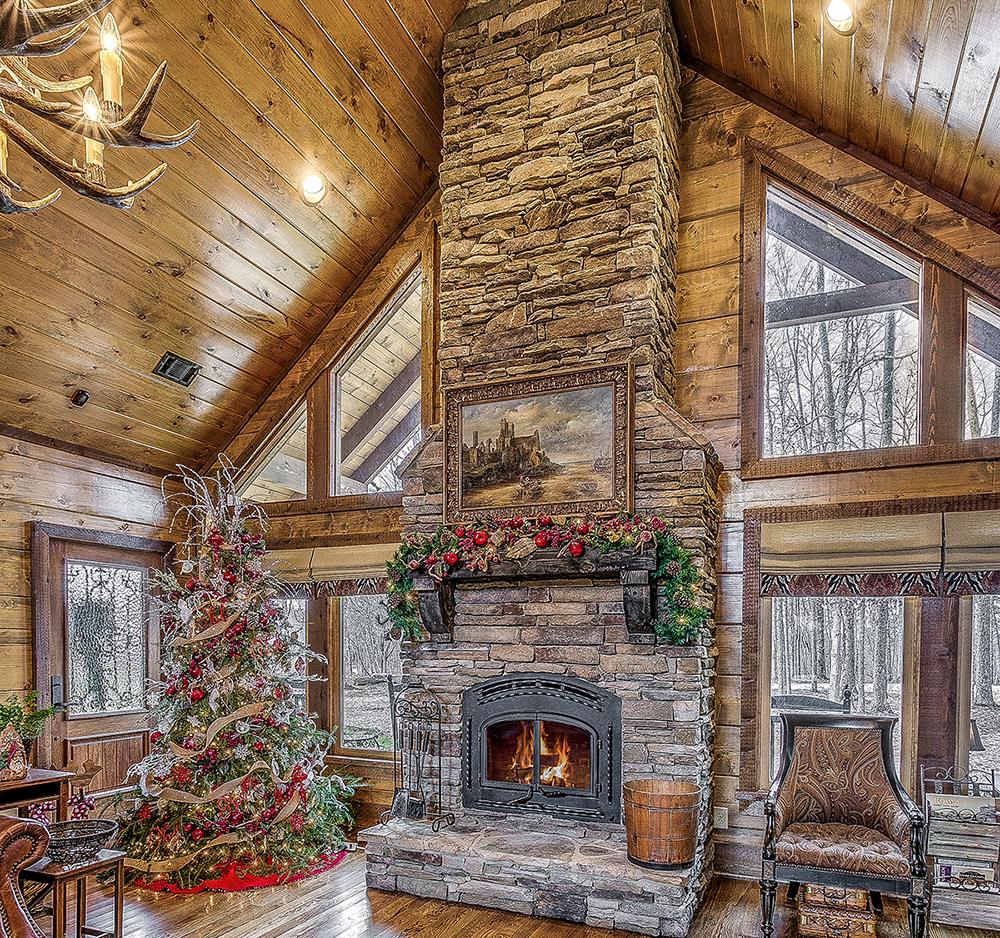
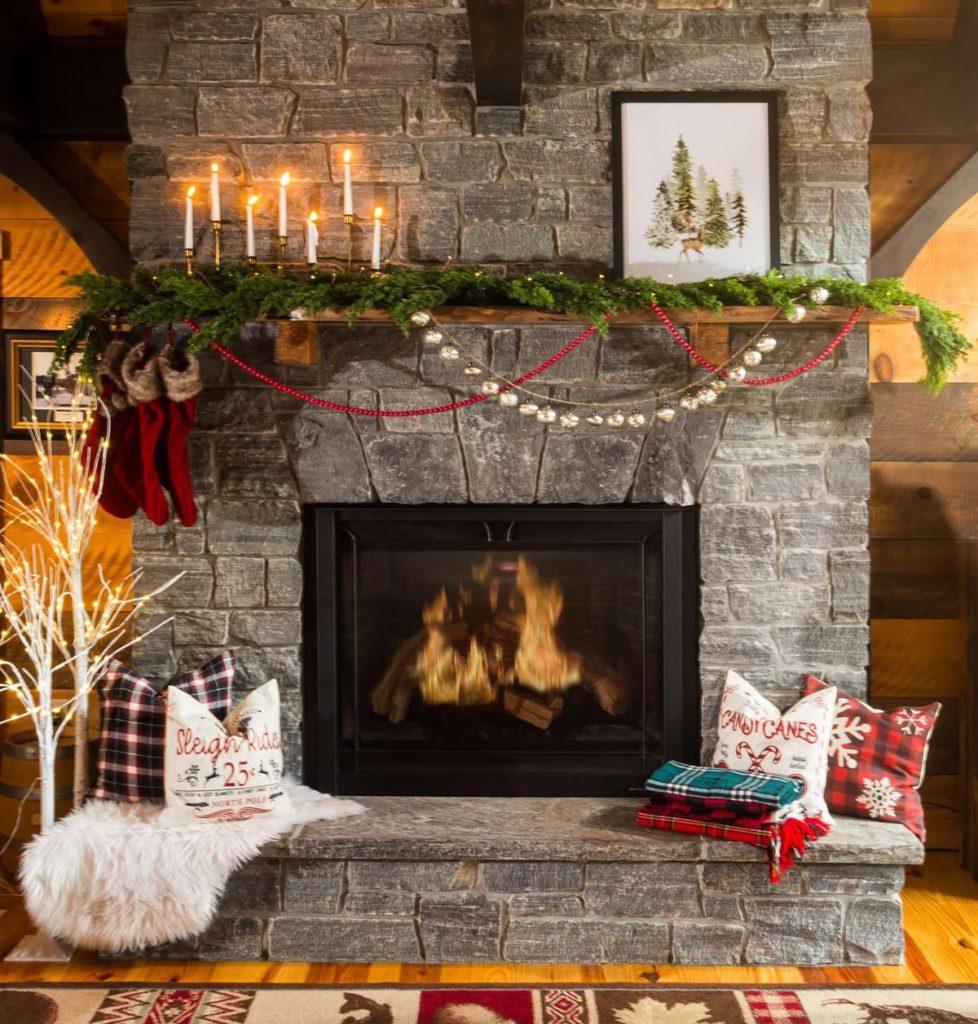
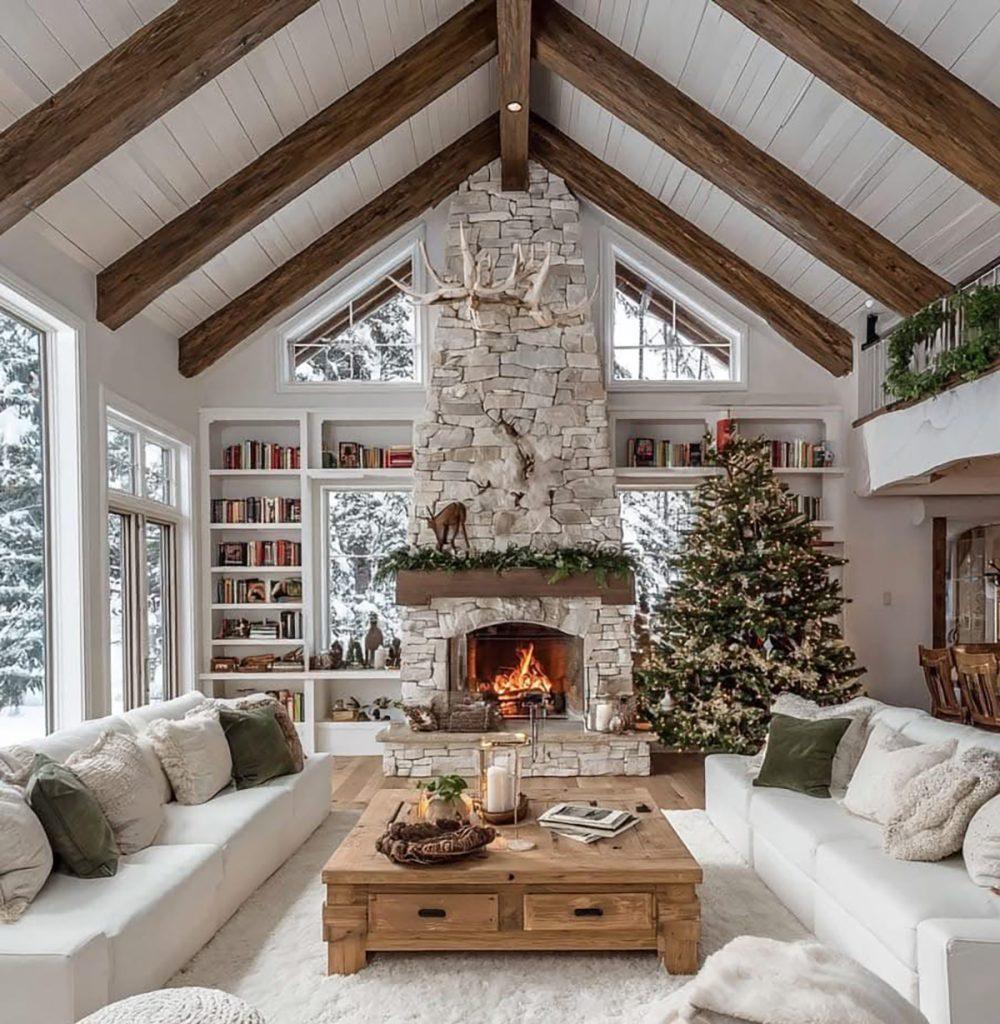
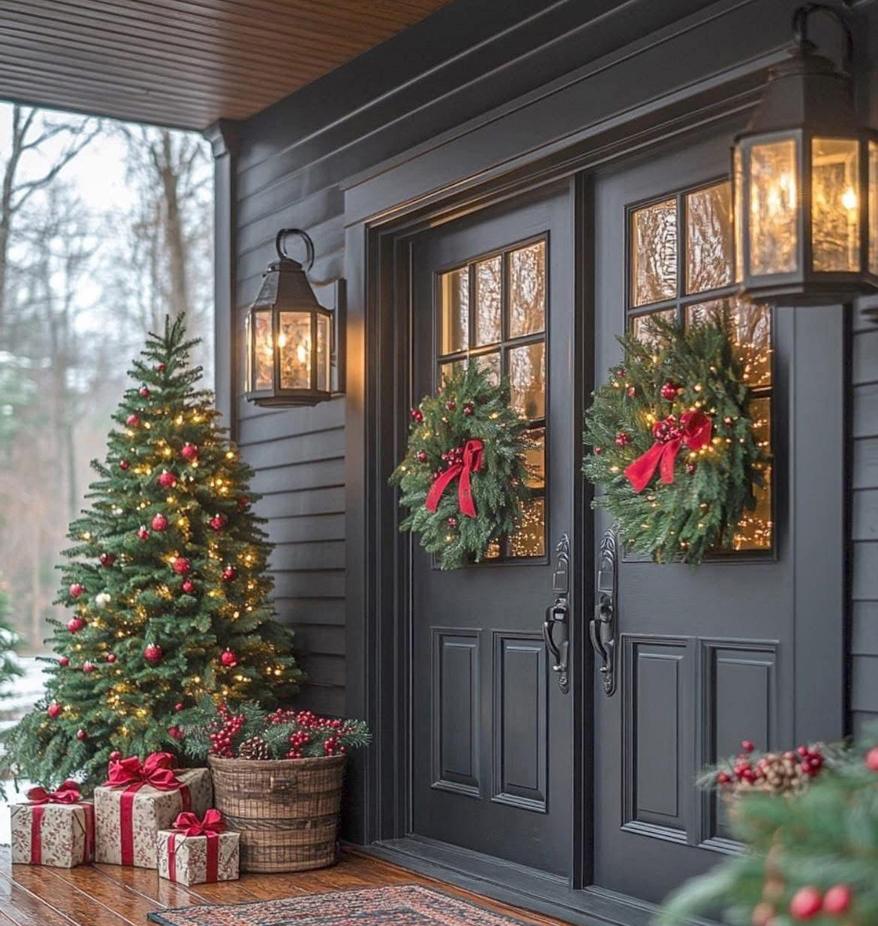
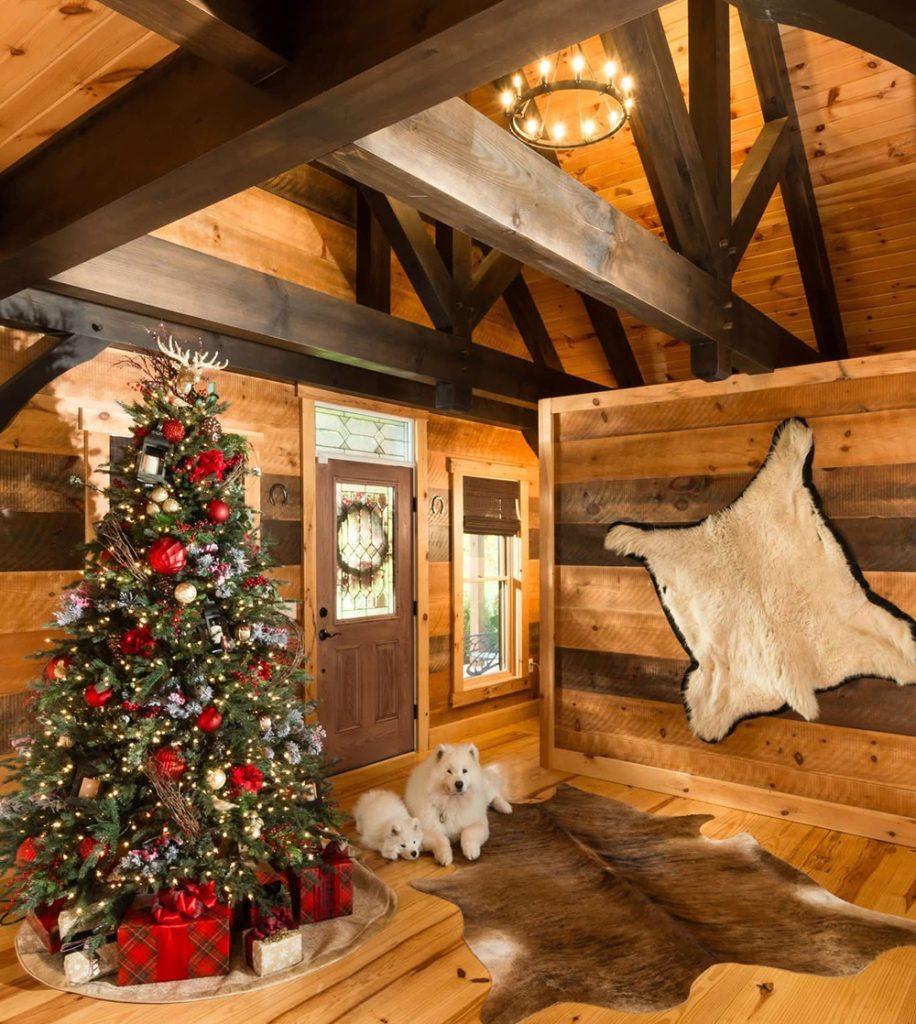
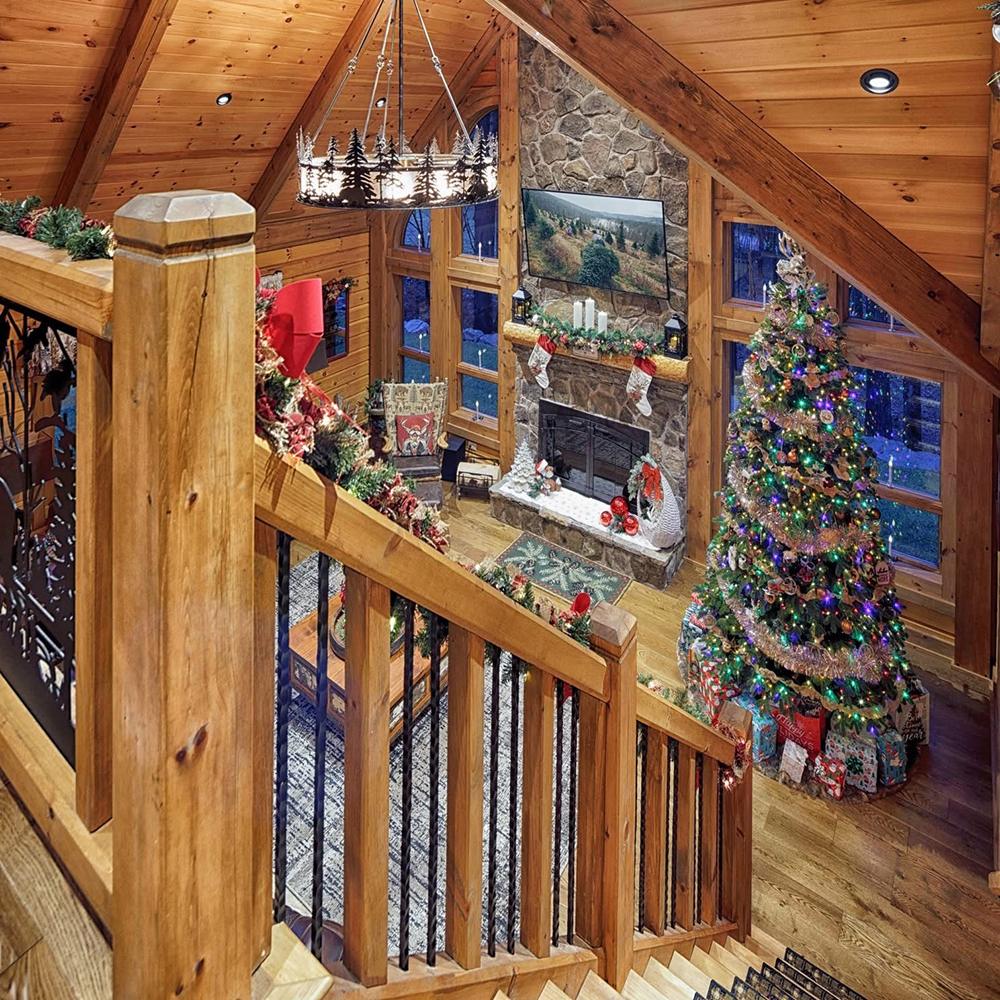
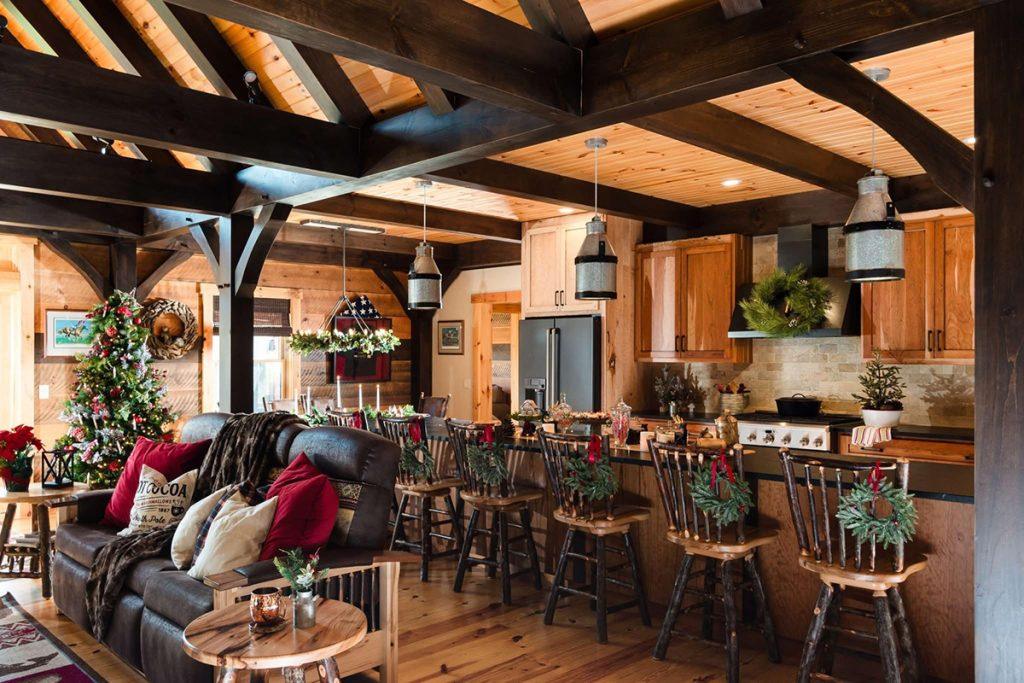
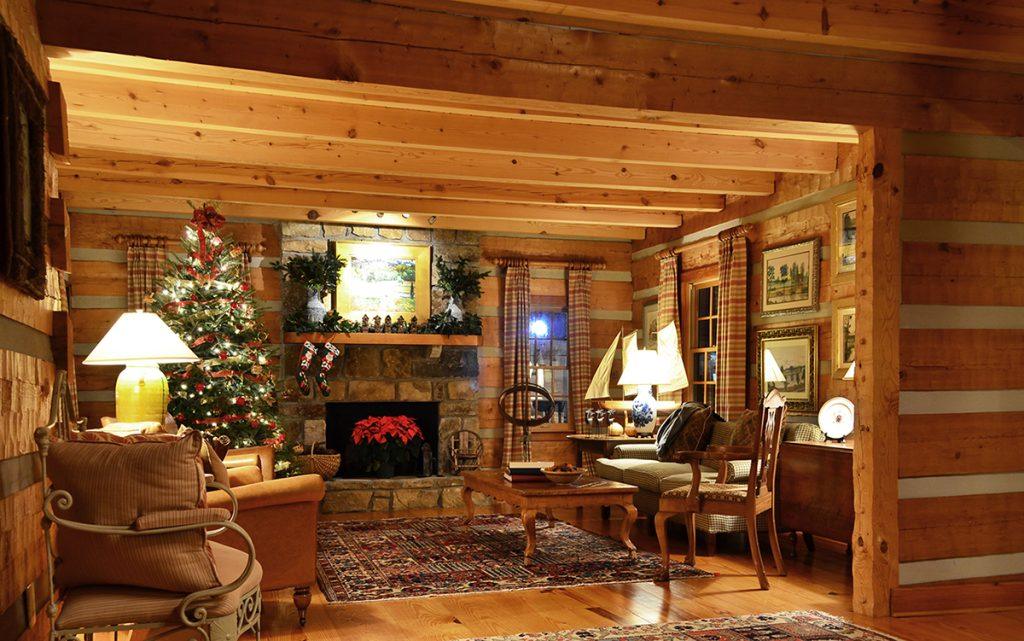
My grandfather, Sophus Johnson, once gave me $2,500 to finish college in 1975. Instead of tuition, I asked if I could use it to buy land and build a house out of an old barn. He laughed, said yes, and made me promise I’d finish college after the house was done — which I did.
Forty-eight years later, I’m rebuilding his log home on the very same land he helped me buy. That’s why we call it Sophus’ House.
Reusing and reclaiming materials has been my way of life ever since I built that first home in 1976. So it’s no surprise to anyone who knows me that my current project combines my grandparents’ 135-year-old log cabin from Denmark, Wisconsin with a historic log barn from Montgomery, Minnesota.
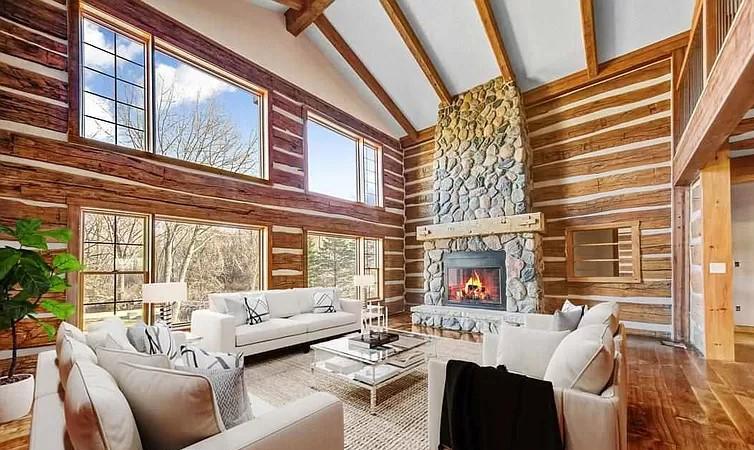
The real push to start came when the producer of Restoration Road called asking if we had any unique projects for 2022. After hearing my idea, they loved it — until they realized filming meant sending a crew to Minnesota in January to watch me dismantle a log barn. Even after I offered to buy them snowmobile suits, they passed!
They were right about the schedule being ambitious, but just before my 70th birthday, it felt like a sign: It’s now or never. I had told so many people about the opportunity that I knew I had to move forward, with or without TV cameras.
And so the build began — using reclaimed materials from all over Minnesota.
- Floor framing from a barn in Sanborn and an old bar in Eveleth
- Second-floor beams from a bank in Albert Lea and logs from Good Thunder
- Insulation and stair timbers salvaged from Fergus Falls
- Basement studs milled from beams taken from a demolished motel in Gilbert
- Soffit, fascia, and trim from a barn near the Mankato airport
- Garage siding from a barn in Mapleton
- And flooring made from black walnut trees we harvested in Mankato three years ago
- All restoration, repairs, chinking, and finishes were completed using Perma-Chink Systems products.

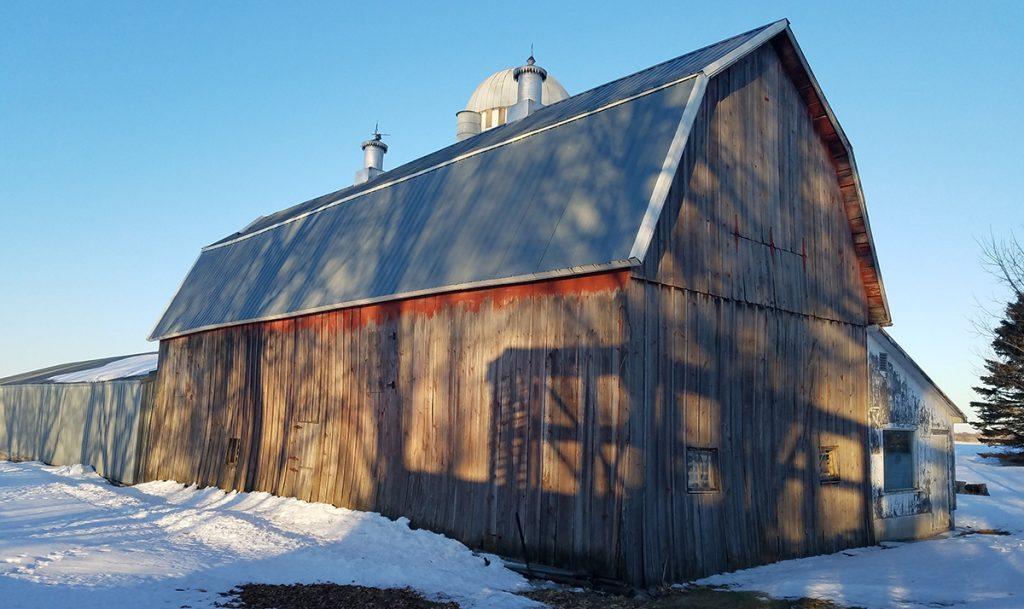
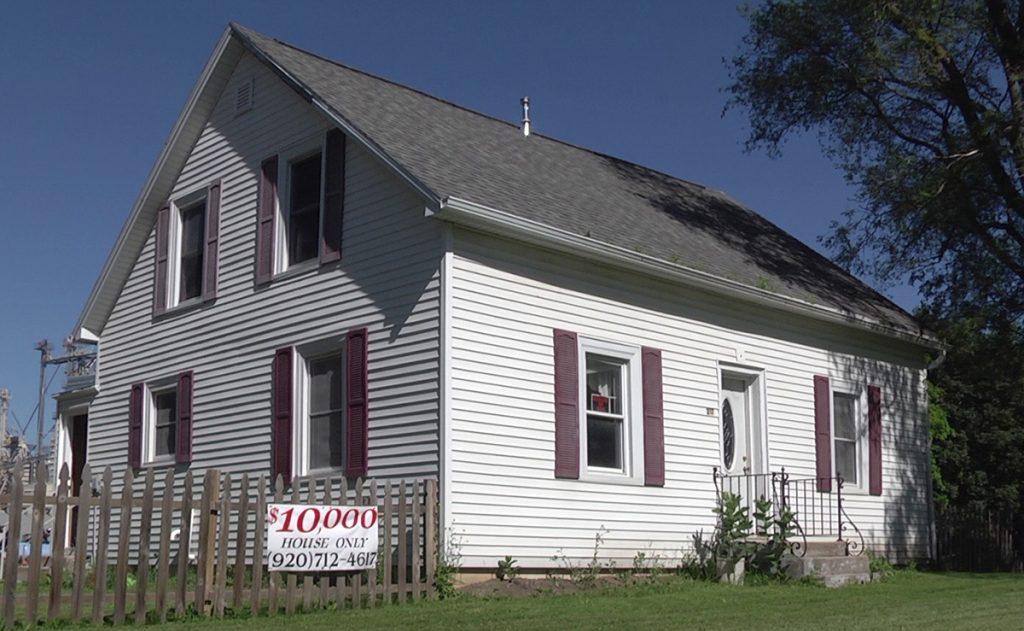
This home is more than a building — it’s a living scrapbook of places, memories, and people who shaped my life. And most importantly, it all started with my grandfather’s gift.
The barn was transformed into the two-story section of the house, while my grandparents’ home became the bedroom wing on the left.
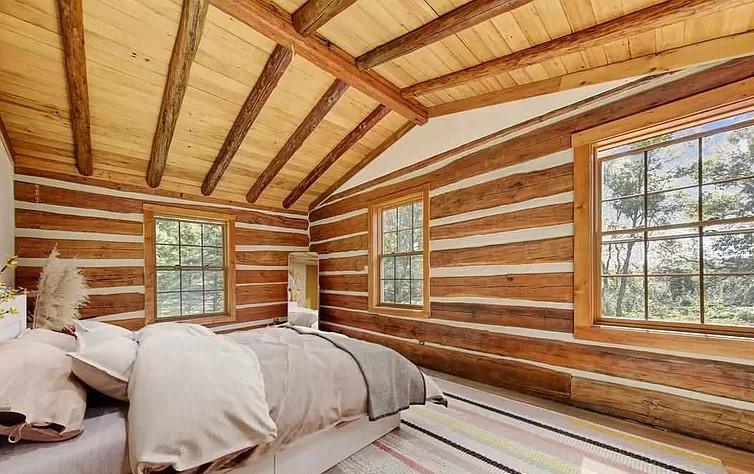
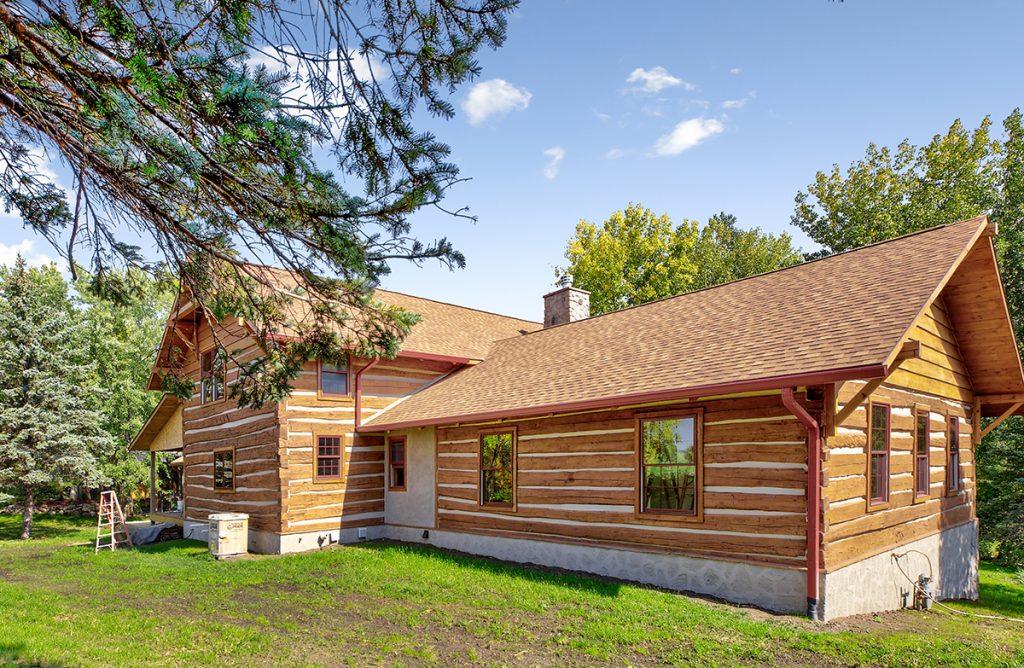
This is now a 4,500 sq. ft. model home, and Mark invites anyone who would like to see a great example of his work to check it out – either in person or virtually. Mark’s website is listed below.
The full restoration video is here:
🎥 How I used Perma-Chink products to restore my grandparents log cabin
Story by Mark Johnson
Artisan Restoration
The exceptional quality of Perma-Chink Systems’ log and timber home wood care products has always been vibrant, and Lifeline Accents line takes that philosophy quite literally. Lifeline Accents, the extensive interior/exterior stain product line, boasts a variety of features that everyone from professional applicators to the do-it-yourselfer find irresistible, and the most obvious is color.
Bold hues such as jade, garnet and midnight catch the eye, while more traditional tones, such as sand, umber and charcoal, round out the 18-color palette. Each vibrant color is designed to allow the wood’s grain to emerge, so the color complements the wood, rather than covering it.
And unlike many other tinted stains, the color endures, meaning fewer touchups over time. Our Lifeline Accents high-performance semi-transparent stains are designed utilizing our proprietary technology to highlight and protect both interior and exterior surfaces.

Creates a wonderful accent for your wood trim,
interior and exterior walls, millwork, timber, furniture and
other elements of your home.
The combination of exciting colors and ease of application will expand choices and add value for both homeowners and applicators. As a leader and innovator in wood-finishing products, Perma-Chink Systems offers a complete line of specialized sealers, stains, finishes, preservatives and cleaners made for the unique needs of log, timber and wood-trimmed homes. Order your free samples here.
If you’d like some guidance for a more substantial home restoration, or you’re interested in trying a new color this year, please reach out today 1-800-548-3554. Just pick your colors and order FREE samples to try it on your wood. Custom colors are available upon request.
Lower Your Energy Consumption and Prepare Your Home for Winter
From the Experts at Perma-Chink Systems
As winter approaches, one of the most important tasks for maintaining your log home is ensuring it’s properly sealed. With the cold months ahead, taking the time to address any gaps and cracks will help prevent cold drafts and keep your home cozy and energy-efficient.
In today’s world of rising fuel costs and growing environmental concerns, keeping cold air out and warmth in has never been more important. A well-sealed home reduces your energy consumption, helping you save money while also minimizing your environmental impact.
At Perma-Chink Systems, we specialize in products designed specifically to help you seal your log home effectively. Although we’re widely known for our premium stain products, our reputation was first built on our high-quality chinking and sealants. So, what exactly do we mean by “sealants”?
In the context of log homes, sealants are materials used to fill gaps, cracks, seams, joints, and any other spaces where air, water, or pests might enter. While many people refer to these materials as “caulk,” we call them “sealants” to emphasize the superior quality of our products compared to typical caulks you’ll find at your local hardware store.
What makes Perma-Chink sealants different?
Our products are specifically designed for log homes, offering superior performance in sealing, and insulating. Unlike basic caulk, many of our sealants remain flexible after curing, providing long-lasting protection without cracking or peeling. They come in a variety of formulations, each tailored to meet different needs—from maintaining flexibility to achieving a hard, durable seal.
Sealants are typically plastic-like compounds that come in tubes or pails, and once applied, they cure to form a strong bond with the surrounding material. This process helps prevent drafts and moisture infiltration, ensuring that your home stays warm and dry throughout the winter months.
If you’re ready to lower your energy costs and get your home winter-ready, Perma-Chink Systems offers the ideal sealants to help you achieve the best possible results. Let us help you seal in comfort and save energy this winter! Call us at 1-800-548-3554 or visit us at Store.PermaChink.com.
How should I go about making sure that I get started right when it comes to maintenance? How critical is it to begin proper maintenance when the home is new?
Research
Do your research in finding the right system. We provide a robust library of Tech Tips that provides information you need to take care of your log and timber home. New homes should not have issues, and we recommend homeowners perform inspections of their home to find any small issues and fix those now, before they become big issues.
The Right System
Chose a system of fully compatible log or timber frame home products to protect your home, such as Perma-Chink Systems. When doing your research ask for samples. This allows you to choose the best color combination you prefer. Our products cover all stages of log home finishing from insect and mold prevention to wood cleaners to sealants to finishes. Our “whole-home” approach results in all our products working together in preserving your log home.
The Right Amount
You’ll also need to know how many linear feet will you get out of a pail of the sealant or chinking that you use to order the proper amount. Do you know the square footage of your log home exterior? You’ll need to know that when ordering finish and topcoats. How many square feet of coverage will you get from a gallon of finish? Sometimes the more moderate or even higher priced products are a better value because they go further than the cheaper ones. This is worth considering, as labor rates keep increasing.
Proper Project Prep
Prep is always the number one thing when sealing or staining. Clean logs, proper log texture (not overly smooth), and compatible weather – avoid extremes and rainy weather.
Hiring a Contractor
If you hire a contractor, make sure that they have a solid background, check their references, make sure they are current with their insurance company, and get quotes from more than one contractor. Perma-Chink Systems has a list of Preferred Applicators that know best how to care for your log home. And pro tip – book contractors well in advance, many Preferred Applicators book months in advance.

